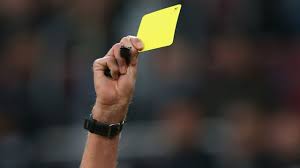Discipline in football is an important aspect of the sport, but it’s not only physical fouls that can lead to disciplinary action. Given the current climate in terms of gameplay and political correctness, players can be cautioned and penalized in one of three ways: they can be shown a yellow card, a red card, or they can be suspended for a specific number of games.
Before delving into these cards and what they mean, let’s first take a quick look at how they originated.
THE ORIGINS OF YELLOW AND RED CARDS The yellow and red cards were the creation of Sir Kenneth George Aston. It is said that the invention was driven by the Charlton brothers, Jack and Bobby, who had to speak with the FA to find out if the referee had warned them in previous games.
While Aston was sitting in his car at a traffic light, observing the sequence of change, the idea of the red/yellow card was born. It would signal a clear infringement, and everyone, including the player, would have no doubt about what happened.
But that’s not the only reason Ken Aston is remembered. He was also the referee of what many consider the dirtiest football match in history. The game that came to be known as the Battle of Santiago.
It happened at the 1962 World Cup when Chile faced Italy. It must have sown the seeds that later blossomed into the invention of the red and yellow cards that were first used in the FIFA World Cup in 1970.
In this article, we will take a look at each of the disciplinary procedures: why they are administered and what they mean, starting with the Yellow Card.
THE YELLOW CARD A referee with a yellow card Essentially, a yellow card is given as a caution or warning. It provides players who receive them another chance to remain on the field for the rest of the game, while a red card means the player must leave the field immediately. Two yellow cards shown to the same player in the same game result in a red card, and the player must leave the field of play immediately.
Basically, there are six different types of infractions that can lead to a yellow card being shown to a player. They are:
- Unsporting behavior
- Dissent by word or action
- Persistent infringement of the rules
- Delaying the restart of play
- Not retreating the required distance at a corner kick or free-kick
- Entering or re-entering the field of play without the referee’s permission.
The current rules for this season stipulate that any player accumulating a certain number of yellow cards will face disciplinary action in the form of match suspensions. It works on the following principles:
- Five accumulated yellows before Matchday 19 result in a one-game suspension.
- Ten accumulated yellows until Matchday 32 will lead to a two-game suspension.
- Fifteen yellows by Matchday 38 result in a three-game suspension.
- Twenty yellows in a season can result in the Regulatory Commission sanctioning the player in the manner it deems most appropriate.
Overall, the suspensions mentioned above refer only to league matches, not tournaments.
THE RED CARD As we mentioned earlier, a red card means instant dismissal. When it comes to the duration of any suspension period, it depends on the nature and seriousness of the offense, as follows:
- For a dismissal after a second yellow in a game, the suspension period is one game.
- For so-called professional fouls, a player will also receive a one-game sanction.
- If the offense in question is dissent, it is usually a two-game sanction.
- When it comes to violent conduct, the sanction is typically a three-game suspension.
The types of offenses mentioned above and the duration of the accompanying bans are provided as guidance only. Each offense must be reviewed on its own merits and circumstances, and the suspension sanction decided upon may be longer or shorter.
OFF-FIELD INDISCRETIONS Since the start of the 2019/2020 season, referees have been empowered to show yellow or red cards to managerial and coaching staff for any indiscretions. But that’s not all.
If there is serious misconduct on the touchline and the instigating party cannot be identified in a fight, it is the senior coach within the technical area who will receive the card.
NUMBER OF RED AND YELLOW CARDS IN THE PREMIER LEAGUE OVER THE LAST 5 SEASONS Now let’s take a quick look at the total number of cards issued in the Premier League over the last five seasons.
Season Red Yellow
2015-16 59 1186
2016-17 41 1315
2017-18 39 1177
2018-19 47 1222
2019-20 44 1281
What is clear from the above figures is the significant difference between the number of yellow cards awarded compared to red cards. The number of red cards issued is reasonably consistent, but in the last three seasons, there appears to be a definitive and concerning increase season after season.
As far as international players are concerned, the player with the most yellow cards to date is Sergio Ramos of Real Madrid and Spain, with a total of 259. Unfortunately for him. When we look at the players with the most red cards issued in the last 20 years, Ramos once again tops the list, with 23 red cards. He is obviously a fiery character.




